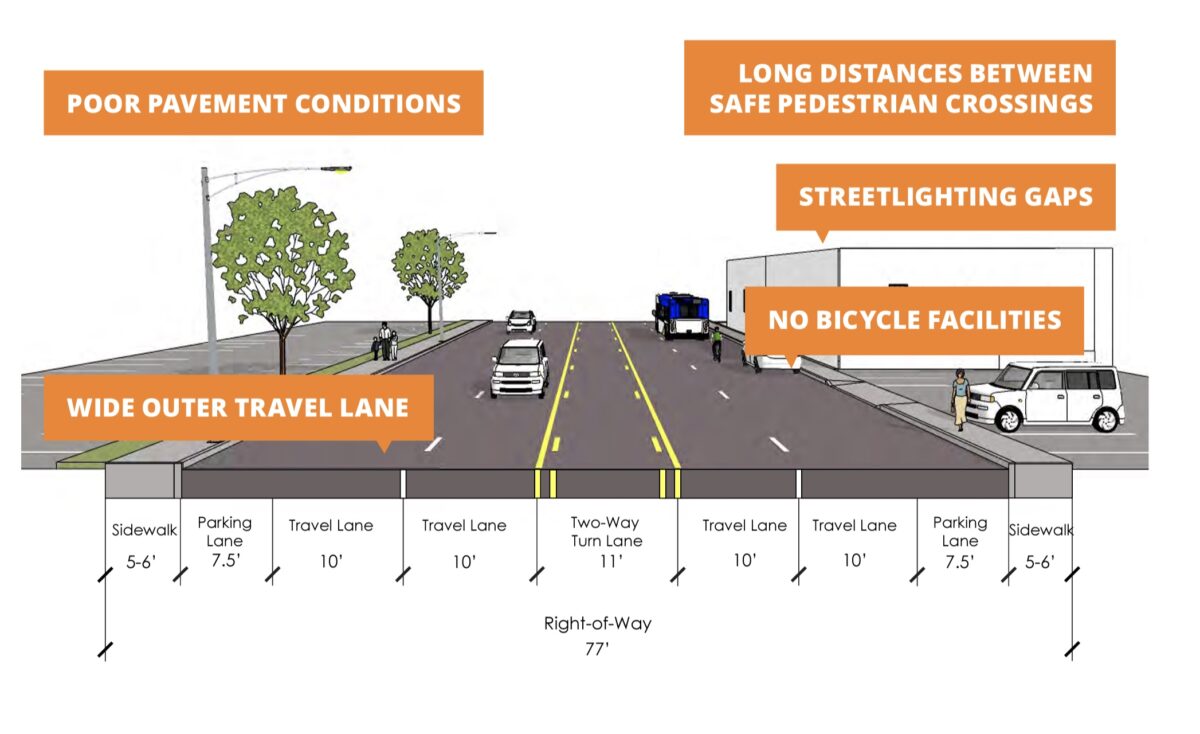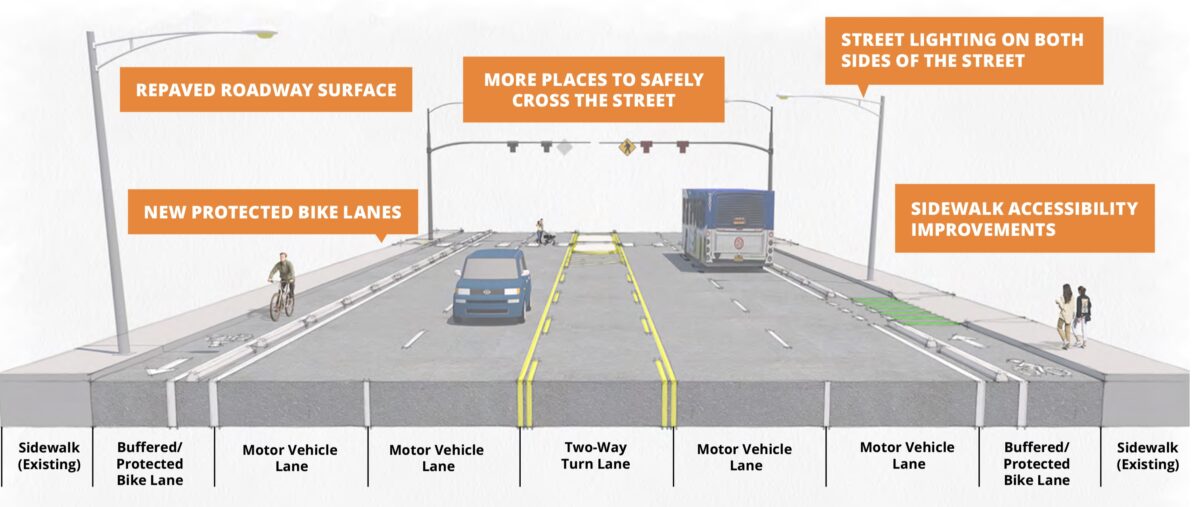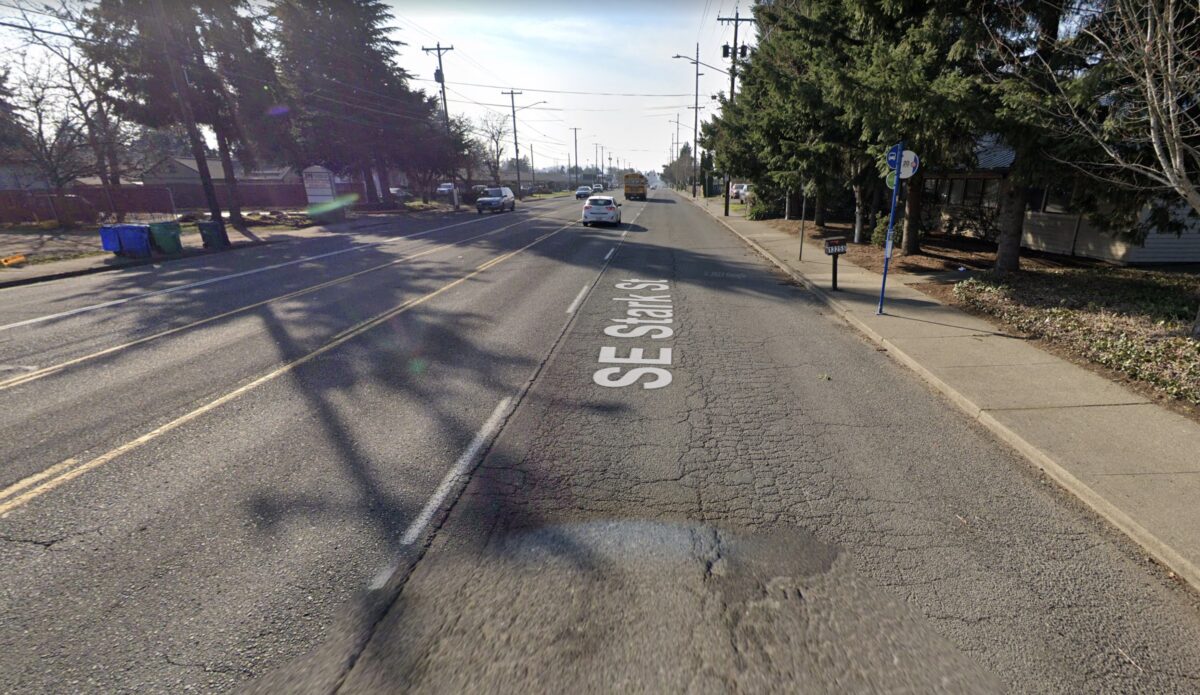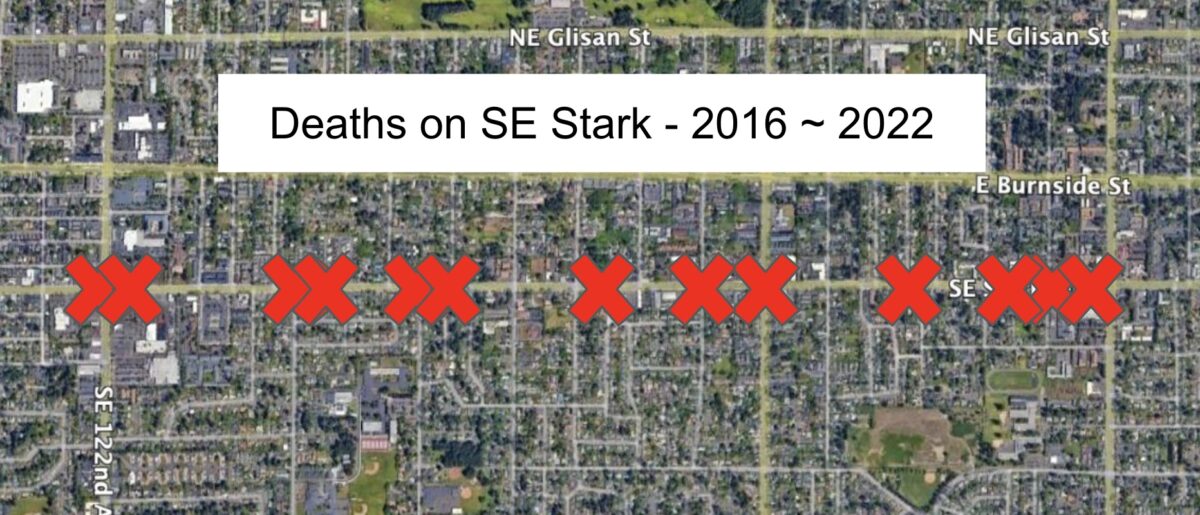“McGill was an innocent bystander walking in the area when she was struck by an out-of-control vehicle.”
– Portland Police Bureau
Note: This article contains opinions.
Last night dozens of people gathered on Southeast Stark near 133rd to remember Ashlee McGill. The 26-year-old was standing on the sidewalk, waiting for the Line 20 bus around 5:30 am this past Saturday when she was hit and killed by someone driving a car.
Police initially assumed the deceased person they found at the scene was the driver. But in an updated statement released Thursday they shared that upon further investigation, McGill was just an “innocent bystander…. struck by an out-of-control vehicle.” Local news stories confirm that McGill was just waiting for a bus to take her home. PPB also says the driver who hit her was racing another driver prior to the crash that killed McGill.
It’s just the latest tragedy caused by the tragic mix of illegal street racing and deadly road designs that make it possible.
SE Stark is a drag strip. It’s tailor-made for doing one thing: going fast in a car. Nothing excuses what these criminal drivers do, but we are fooling ourselves if we think road design doesn’t play a factor in these terrible outcomes.
Since 2016, thirteen people have died in traffic crashes on SE Stark in just a 1.8 mile section between SE 122nd and SE 160th. 13 people. Dead. On the same stretch of road. And these weren’t drivers just making a mistake on a tricky stretch of road. The profile of Stark in this location is wide, straight, and the visibility is excellent. Reading through the causes of these deaths almost all of them were some combination of criminal negligence, hit-and-run, or drunk and reckless driving. Or in this latest case, street racing.
The City of Portland is well aware of these dangers. According to the Portland Bureau of Transportation, Stark is a designated high crash corridor where high speeds are common. If the 13 deaths mentioned above, seven of them were people walking. PBOT says speed was about three times more common a factor in pedestrian crashes on SE Stark Street as it is citywide.
PBOT lowered the speed limit on this section of Stark to 30 mph in April 2018. They also deployed photo radar vans after the changes and worked with Portland Police Bureau to enforce the lower speeds. But it hasn’t been nearly enough. Nine people have died since the speed was lowered.
In April of this year PBOT installed it’s first-ever “intersection safety camera” at Stark and SE 122nd. But that’s just one intersection, and it’s 11 blocks from where these drivers chose to race their cars.
Nine people have died in the past four years on this section of Stark. We are on pace to see five more people killed by the time this project wraps up.
These were just PBOT’s first moves to tame Stark. They’ve got $20 million lined up to do more. Their plan is to spend half the money on new pavement and the other half to add bike lanes, signal upgrades, ADA ramps, two protected intersections, better crossings, more street lights, and so on. The Outer Stark Safety Project will go from SE 102nd to Portland’s eastern border with Gresham at SE 162nd. Open houses for the project were held in 2019 and PBOT had planned to install some of the initial elements this past spring.
But in a phone call with PBOT Interim Communications Director Hannah Schafer this morning, I learned that the project hasn’t started yet. PBOT is still finalizing the project scope with their consultant and the design phase of the project will begin this fall. Schafer said construction won’t begin until 2024.
Nine people have died in the past four years on this section of Stark. We are on pace to see five more people killed by the time this project wraps up.


And will the changes even do anything? The new cross-section proposed by PBOT looks a lot like the current one. There will still be five lanes for driving. Yes they’ll be narrower and we’ll have protected bike lanes instead of parking lanes, but the overall space for driving won’t change that much. It will still be very easy to speed — even to race — on the new SE Stark we will have waited over six years for and spent $20 million on.
I worry that even though PBOT means well, their designs for these east Portland arterials are much too timid. Despite all the back-patting at ribbon cuttings, the aggressive, dangerous, criminal, dysfunctional driving behaviors will remain. I’ve been saying this for many years, but I still see the same approach where we focus efforts on improving conditions for walkers and bikers, but we fail to grab the bull (drivers) by the horns. The politics to “improve bike and ped safety” are easy. The politics to make it harder for people to drive like they’re in a car commercial, are not.
We design streets to be safe for politicians, and to be unsafe for people. This must change.
UPDATE, 2/16: Portland Police have arrested the driver who killed Ashlee McGill. The driver has been charged with Manslaughter. More info on PPB press release.





